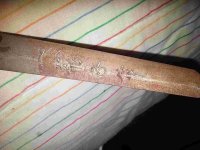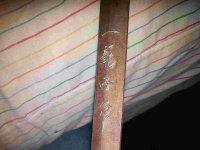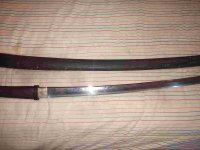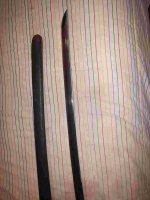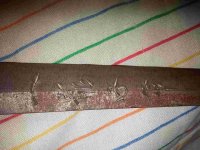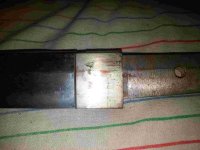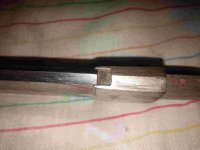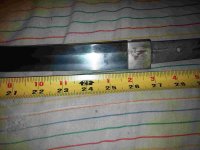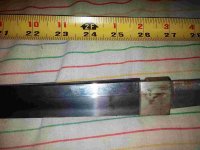I have found an old, appears to be Japanese sword at a relatives house while cleaning it out. I am trying to find out more about it. It has a wooden outer sheath and the handle is wood also. There are symbols on the tang that I have tried to photograph. A Google search turned up no symbols that look the same. Anyone have such knowledge?
Attachments
Last edited:

